16 November 2023
![]() 6 mins Read
6 mins Read
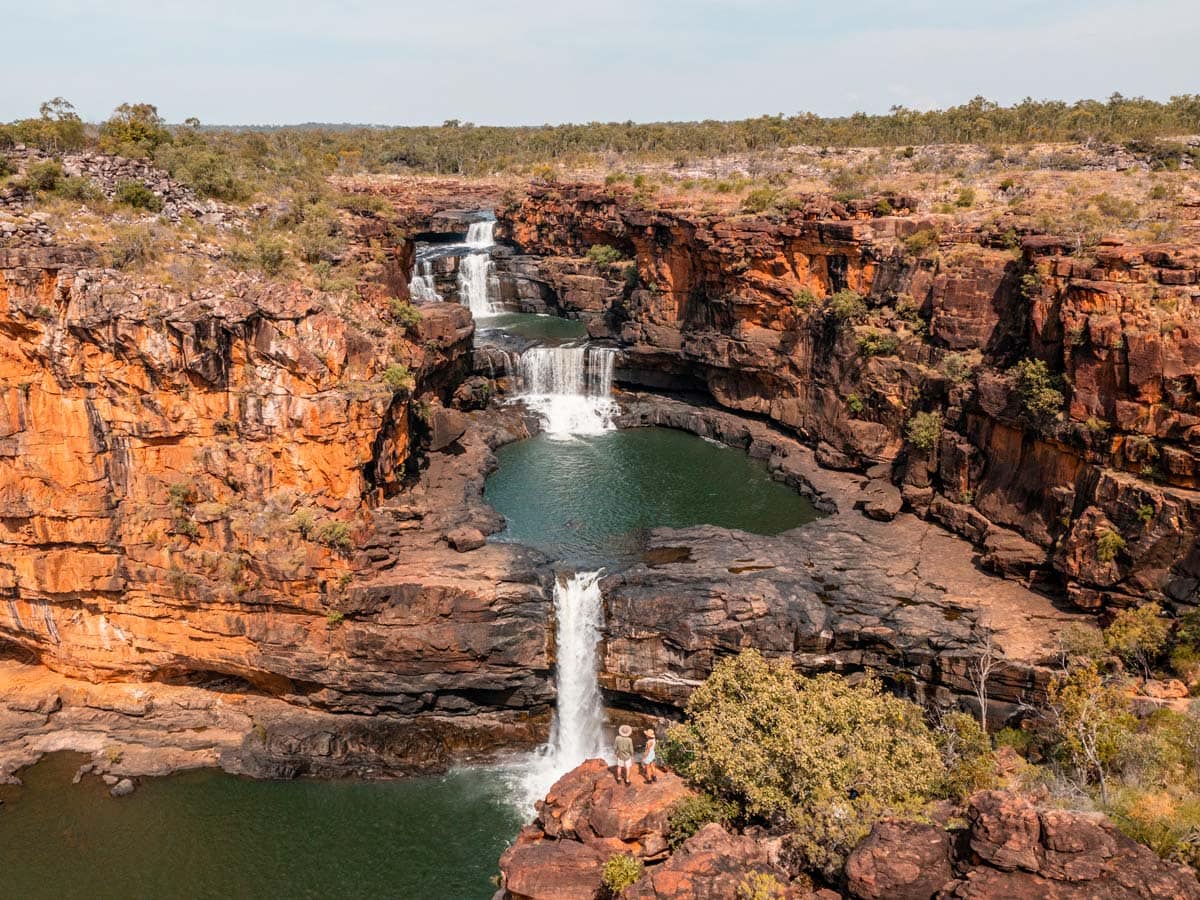
Bordered by the Great Sand Desert in the south and the Northern Territory in the east, the Kimberley offers over 420,000 square kilometres of wilderness to explore. Famous for its rugged ranges, dramatic gorges, semi-arid savanna and largely isolated coastline, this wonderfully wild region is crisscrossed with unsealed, rugged roads (and also some bitumen), each leading you to new discoveries.
Step away from everyday life and head off the beaten track to World Heritage-listed Purnululu National Park or put your vehicle into 4WD to bump along the Gibb River Road, or cruise north from tropical Broome to explore the remote beaches of the Dampier Peninsula.
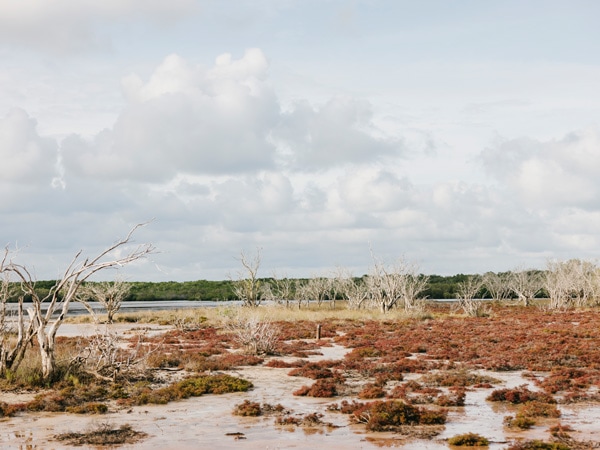
Dampier Peninsula is renowned for its rugged coastal wilderness. (Image: Tourism Western Australia)
If there’s one way to earn your stripes as a true-blue outback adventurer, it’s by taking on the 660-kilometre Gibb River Road, a 4WD-only track that cuts through the heart of the Kimberley.
The former cattle droving route is legendary, not just for the station characters you’ll meet on the way or the bottle-shaped boab trees, but for the stretches of corrugations that’ll rattle your teeth.
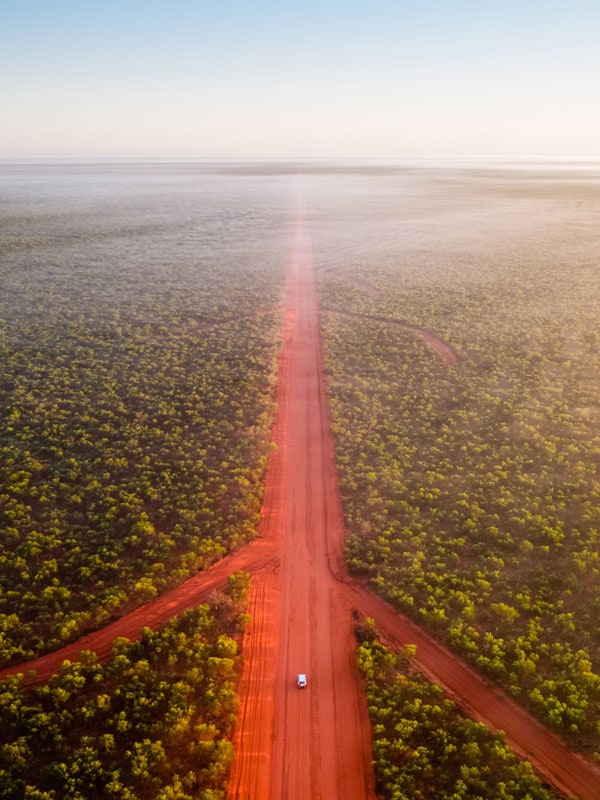
Take the scenic paprika-hued road. (Image: Tourism Western Australia/@from.miles.away/@mattfrommilesaway)
The deep paprika hue of the land gives way to water-filled gorges and immense rock formations, the kind of natural havens you won’t find anywhere else in Australia.
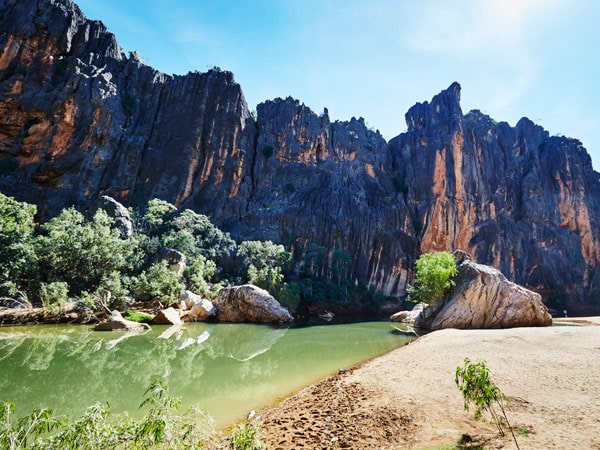
Find Windjana Gorge, one of the spectacular natural rock formations in the Kimberley. (Image: Tourism Western Australia)
The route between Derby and Kununurra can be done in five days, but it’s best to take over a week to do it properly, blending in memorable stays at working cattle stations, wilderness parks and conservation sanctuaries.
If you’re self-driving, a 4WD, water, food, safety supplies and camping equipment are essential. Otherwise, join an all-inclusive tour and enjoy the ride.
Just out of Derby, stop at Mowanjum Art and Culture Centre to meet Aboriginal artists and watch the intricate craft of carving boab seeds or painting bark.
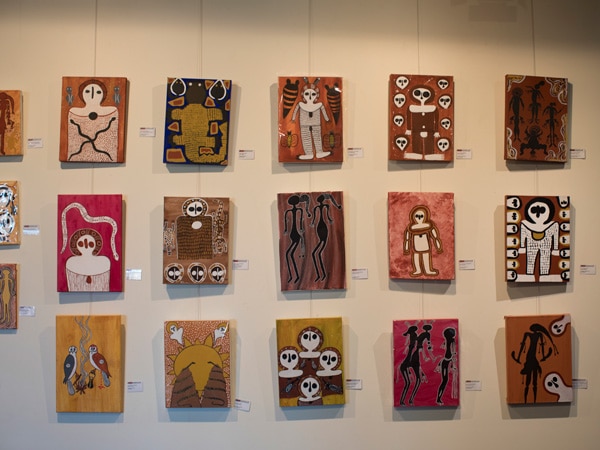
Stop by the Mowanjum Art and Culture Centre to see Aboriginal artworks. (Image: Tourism Western Australia)
Windjana Gorge is rimmed by 300-metre walls that are part of a 350-million-year-old Devonian reef system. There are various walking trails through the three-kilometre gorge, where you’ll see fossils and (harmless) freshwater crocodiles.
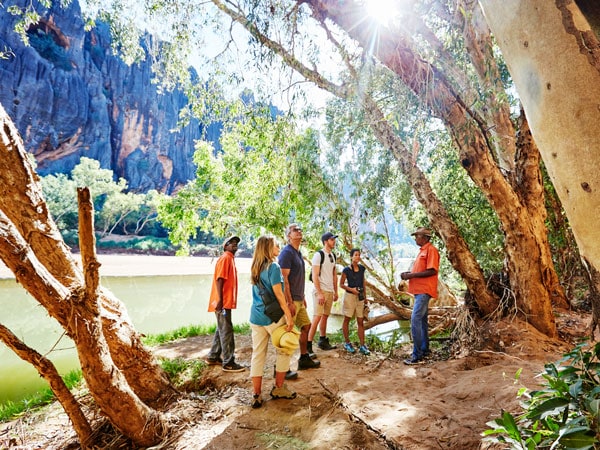
Sign up for an epic walking tour along the three-kilometre Windjana Gorge. (Image: Tourism Western Australia)
Bell Gorge, tucked inside King Leopold Conservation Park, is regarded as the jewel in the Gibb River Road’s crown, thanks to its cascading waterfalls and glassy swimming holes.
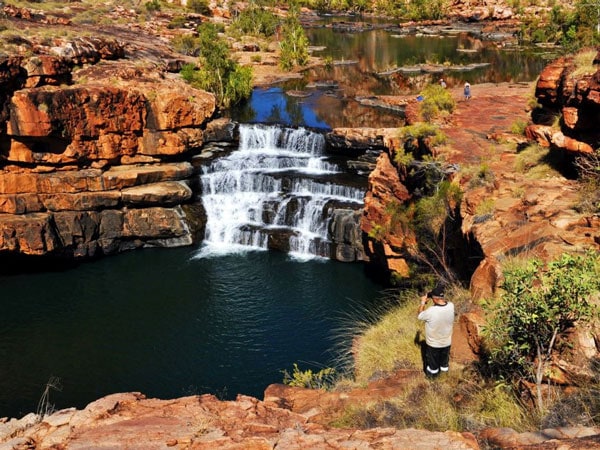
Be amused at the spectacular waterfall in Bell Gorge. (Image: Amanda Tassone)
If the travel budget permits, take a scenic flight over the Kimberley’s rugged landscape. From Drysdale River Station, 60 kilometres north of the Gibb River Road, a scenic flight covers the mighty Mitchell Falls and the Prince Regent coast, which features giant clefts, gorges and waterfalls.
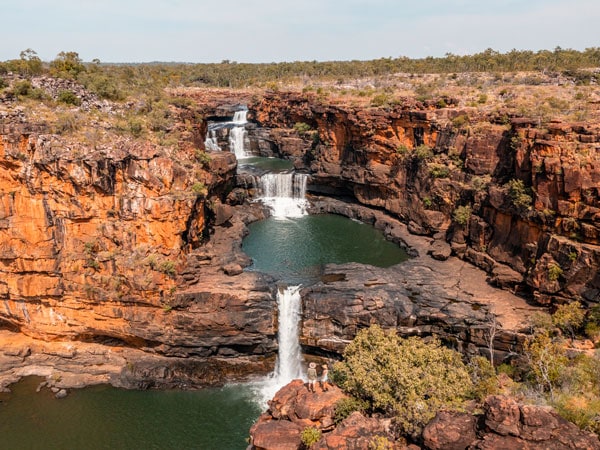
Mitchell Falls is a four-tiered natural wonder to behold. (Image: Tourism Australia)
If you can, stay at El Questro – where you’ll spend your days waterhole dipping, horse riding, fishing and sunset gazing. If you’ve got the coin, El Questro’s The Homestead offers a spot of luxury in the outback.
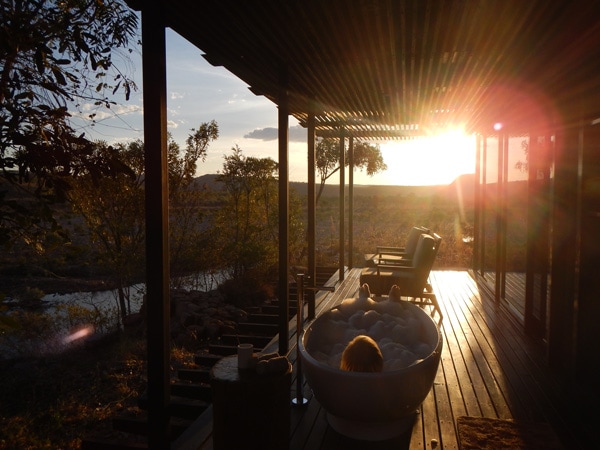
Go off-grid but keep it luxe at the El Questro Homestead. (Image: Tourism Western Australia)
In 2023, the 205-kilometre route between Broome and Cape Leveque was sealed, unlocking the remote Dampier Peninsula, where you can find pearl farms, pastoral stations and 71 Aboriginal communities.
The area was previously only accessible to 4WD vehicles able to tackle the 90 kilometres of sandy, corrugated track that would coat everything in red dirt. We reckon it’s time to plan a trip.
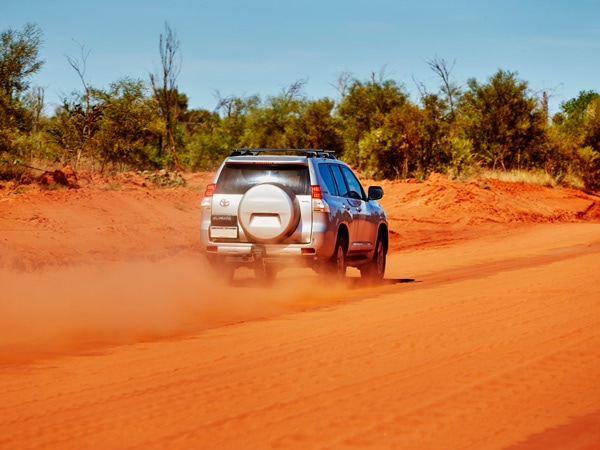
Drive the red dirt country from Broome to the remote Dampier Peninsula. (Image: Tourism Western Australia)
The drive from Broome to Cygnet Bay Pearl Farm, one of the most popular attractions on the famous Cape Leveque Road, takes nearly three hours. Allow several days to explore the Dampier Peninsula.
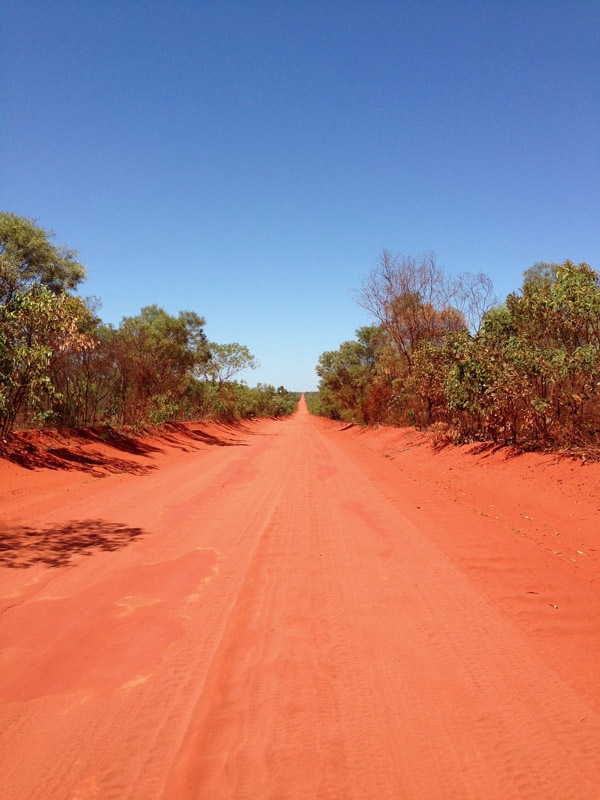
The iconic red dirt track along Cape Leveque Road. (Image: Tourism Western Australia)
A regular car will go the distance but to reach all the spots on the Dampier Peninsula it’s best to travel in a 4WD.
Beagle Bay church and its Aboriginal community mark your first stop. Over 100 years old, the Germanic church interior is inset with thousands of pearl shells and the walls are painted in pastels.
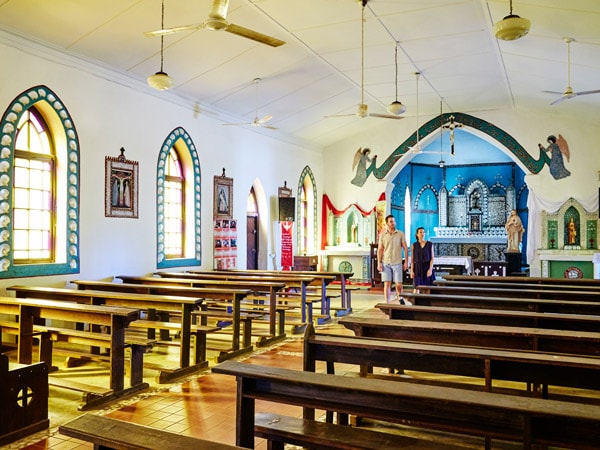
The Beagle Bay Sacred Heart Church is famous for its mother-of-pearl shell altar. (Image: Tourism Western Australia)
Cygnet Bay Pearl Farm is still in the same family that started it, several generations ago. The farm tour and sea safaris are definitely worth doing. Allow time for an excellent coffee and a dip in the pool beside the cafe.
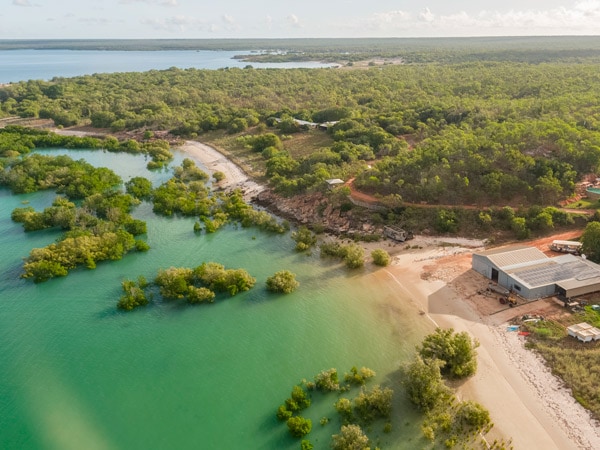
Cygnet Bay Pearl Farm is located at the tip of the beautiful Dampier Peninsula. (Image: Tourism Western Australia)
While driving from Kununurra to the Bungle Bungle Range in Purnululu National Park isn’t easy or quick, it’s well worth the effort. Known for its incredible beehive-like formations, the Bungle Bungle Range has become a Kimberley icon. With heaps of gorges to explore, it’s easy to spend several days wandering around some of Mother Nature’s most dramatic creations.
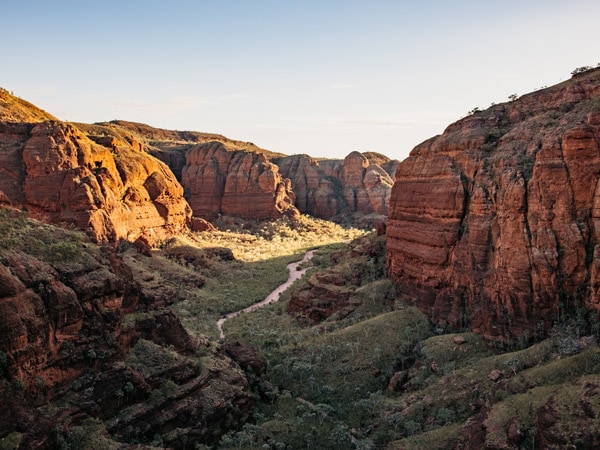
Purnululu National Park is home to stunning gorges and landscapes. (Image: Tourism Western Australia)
Travelling between Kununurra and the Bungle Bungles takes around five hours if you follow the Great Northern Highway and turn off when you reach Purnululu National Park. The track into Purnululu is only 53 kilometres but it’s challenging, so it is recommended to drive at a slower pace.
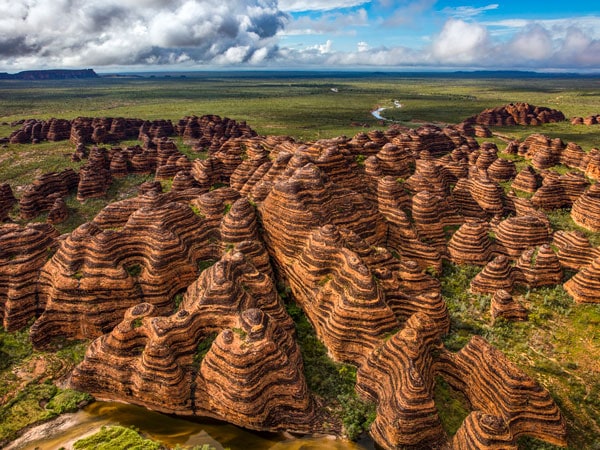
The Bungle Bungle Range is formed into a series of beehive-shaped cones. (Image: Tourism Western Australia)
Due to its remote location, take plenty of water, a full tank of fuel and food. A high clearance 4WD is required to travel inside Purnululu National Park.
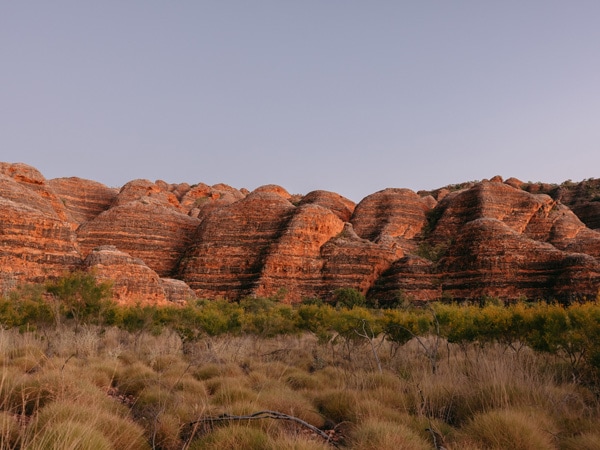
Embark on a road trip to the astounding striped rock formations at The Bungle Bungle Range. (Image: Tourism Western Australia)
Echidna Chasm is one of the best things to see in Purnululu National Park. Head off on a 2-kilometre return walk from Echidna towards the narrow gorge, where the width is only one metre wide in some places. Time your visit to the middle of the day to witness the ‘golden glow’ where sunlight directly hits the rock and creates an unforgettable light show.
Cathedral Gorge is not to be missed when visiting the park. This natural amphitheatre was created from water erosion over time and is staggering in size and beauty.
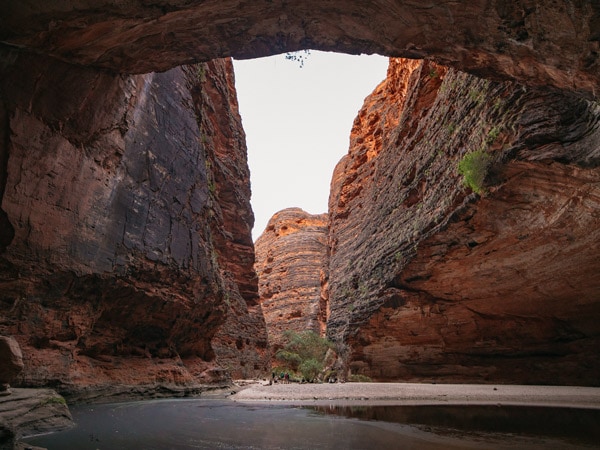
Cathedral Gorge resembles a natural amphitheatre of red rock. (Image: Tourism Western Australia)
LEAVE YOUR COMMENT